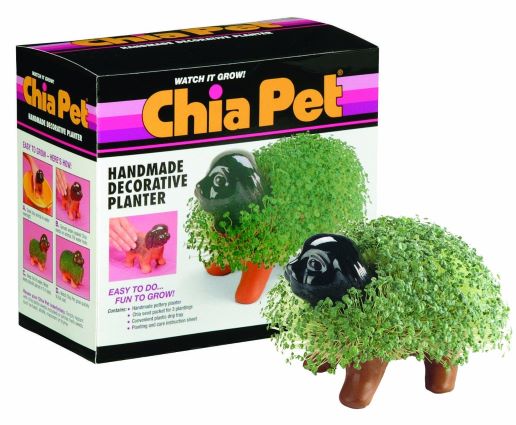How to Grow Chia Herb Plants

How to Grow Chia in Your Herb Garden
Chia plants… surprise, surprise. They’re not just for Chia pets. Chia plants are classified as an herb. They are most often grown for their flavorful seeds. The leaves and sprouts are edible, too. And best of all, they are good for you! For us gardeners, there’s even more good news: chia plants are easy to grow. Perhaps the only downside to this great annual plant, is they can become invasive, as the prolific seed production will self-seed the area where they are planted and spread from there.
Chia seeds have a pleasant, nutty taste. They are healthy and nutritious. The seeds are high in fiber, calcium, Omega-3, and other ingredients. They are gluten-free. All this goodness makes you want to grow them, doesn’t it? Yeah, me too! The seeds are not readily available from the top home garden seed companies, so you won’t find them in brick and mortar stores, You can easily find chia seeds for planting with a quick online search.
Chia plants are native to Mexico and Guatemala. They were grown by Ancient Aztecs and other indigenous people. They are an annual plant and members of the Mint family. Most varieties grow up to 4 feet tall and 18 inches in diameter. The tallest variety grows up to 6 feet. The plants begin to produce blue, lavender, and white flowers four months after they germinate. The flowers attract bees, butterflies, and hummingbirds. The birds will eat the seeds, too. The plants prefer dry, warmer climates and are drought resistant.
Plant Height: Most varieties grow to four feet.
Annual, Salvia hispanica
Medicinal and Culinary Uses
Seeds are the most common crop. They can be eaten raw and whole. Sprinkle seeds over a wide variety of foods. Add the seeds to pudding, juice, teas, milkshakes and smoothies. The seeds can be ground for flour and in baking, like flax. The leaves can be used in tea. Use the sprouts in salads or smoothies.
The high fiber content is good for the digestive system. It is important to note that the seeds absorb a lot of water. If dried whole seeds are eaten in large quantities, they can absorb water in the stomach and digestive tract, causing temporary blockage.
How to Grow Chia - Plant Propagation
Chia plants are started from tiny black seeds. You can start them indoors, or directly plant them into your herb garden. The seeds are tiny, so most growers start them indoors. The seeds germinate in 1 to 2 weeks.
Soak seeds in water at room temperature for about 30 minutes, then sow them into seed trays. Place them on top of the soil in the seed trays and lightly cover them with light seed starting soil. Keep the soil moist, not wet. The high fiber content of the seeds readily absorbs water and will rot in wet soil.
How to Grow Chia Herb Plants
Chia plants are easy to grow and fast-growing. Established plants require little maintenance.
Chia plants prefer warm, dry weather, and bright, full sunlight. They grow well in average or sandy soils that are well-draining. Mix in a healthy amount of compost before planting.
Plant seeds or transplants outdoors after all danger of frost has passed. Transplants should be at least 6 inches tall and have 6 to 8 pairs of leaves before planting Final spacing of plants should be 12″ to 18″ apart.
Plants are drought resistant. Water only when the soil is dry to the touch.
The plants need little or no fertilizer. Add fertilizer only if grown in poor soils.
Mulch around plants early to keep weeds down, while the chia plants get established.
The leaves and flowers grow off of sturdy stems. Four months after germinating, the plants will begin to flower. Expired flowers will produce the seed pods. You can deadhead flowers for an additional, larger profusion of flowers later.
After the flower has died, you will see the seed pod. When the pods are dry and brown, cut off one pod and shake it. If you can hear the seeds rattling in the pod, they are ready to harvest.
Dried seeds are long keepers. They can be stored in an airtight container for two to three years.
Chia plants have little or no pest and disease problems.
Chia plants do not survive a hard frost.
Ideal pH: 6.0 – 8.0
Related Articles
Please support our site. Shop for:
- rmmatthews100@hotmail.com
- 585-721-6528
- Rochester, NY
©1999-2024 GardenersNet.Com, All Rights Reserved

